Proof
Proof was created to help designers and business owners food packaging industry better manage the label design process. Partnering with SpanTree on this, I led design for this 0-1 project, whose mission is to help people uphold regulatory standards, mitigate financial risks, and safeguard consumer trust.
Date
2020
Client
SpanTree
Category
Product Design
UX/UI
UX Writing
Creative Direction
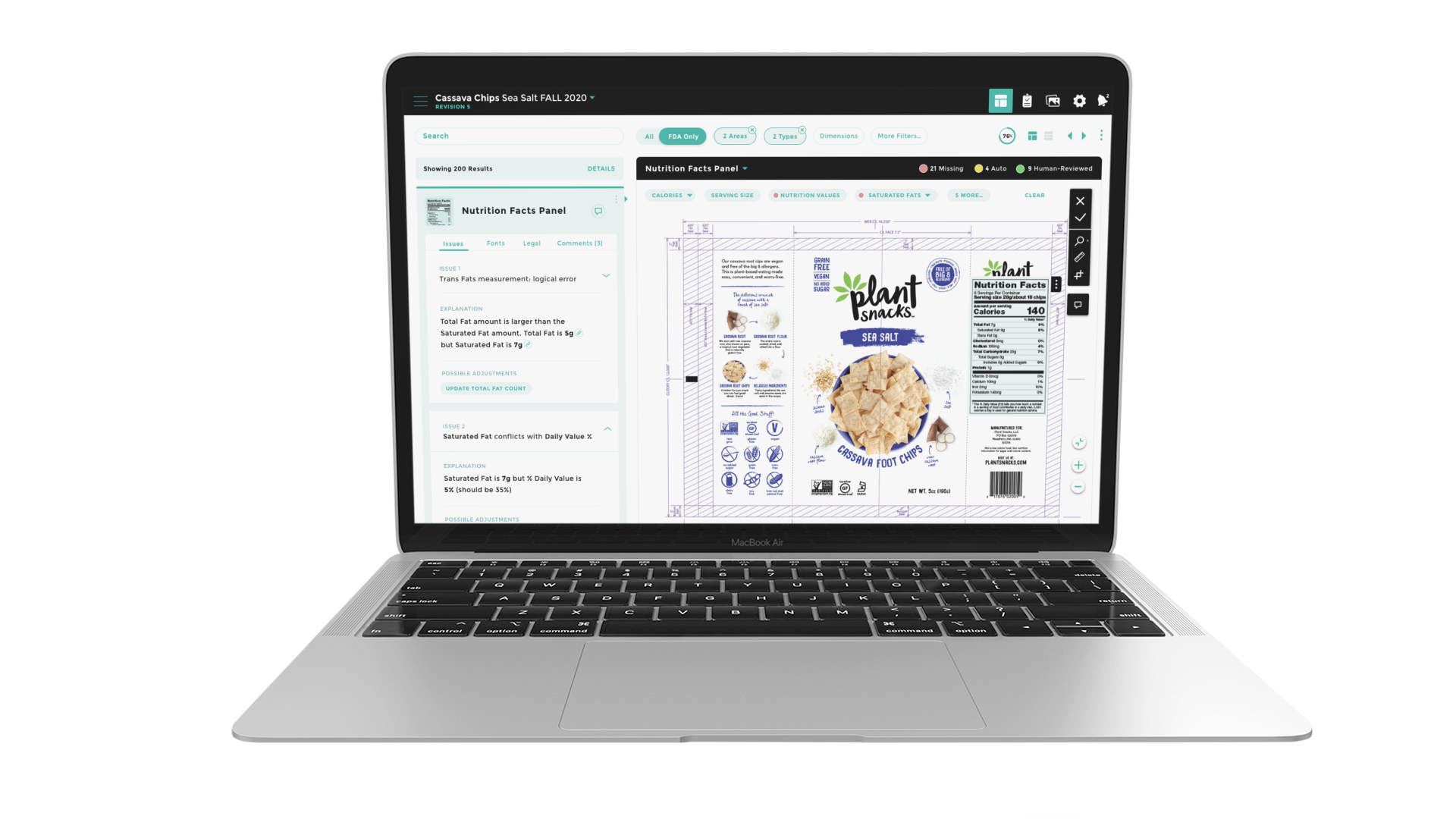
01 Problem
In the American food industry, vetting nutrition labels is'nt just a meticulous task, but also a legal mandate. With strict regulations set by the FDA, inaccurate nutritional information and incorrect visual formatting can lead to severe consequences — from hefty fines to a tarnished brand reputation.
And while there's a lot of written documentation for law-abiding label design, it's very difficult to keep track of different versions of food labels while staying compliant.
That's why this app was created: to sync up a project management platform with Adobe Illustrator and Photoshop plugins that, together, work to simplify FDA compliance.
02 Approach
Through close collaboration with the end client and their in-house users, we were able to chart out user journeys, a sitemap and a strategy for Proof's key touchpoints: the marketing site, the app, the sign-up flow, and the plugins.
Building on this, my team and I created a high-fidelity interface that evolved in parallel to the product's branding while providing targeted solutions to common issues in the nutrition-label-vetting space.
03 Solution
The outcome was a series of wireframes, sitemaps, and finally mockups that covered the entire user journey through Proof, both on behalf of the designer and their project manager within the food sector. We created a robust filter system and an art board that helps isolate separate design file layers in order to make it easier to leave feedback on them and factor them into the vetting process.
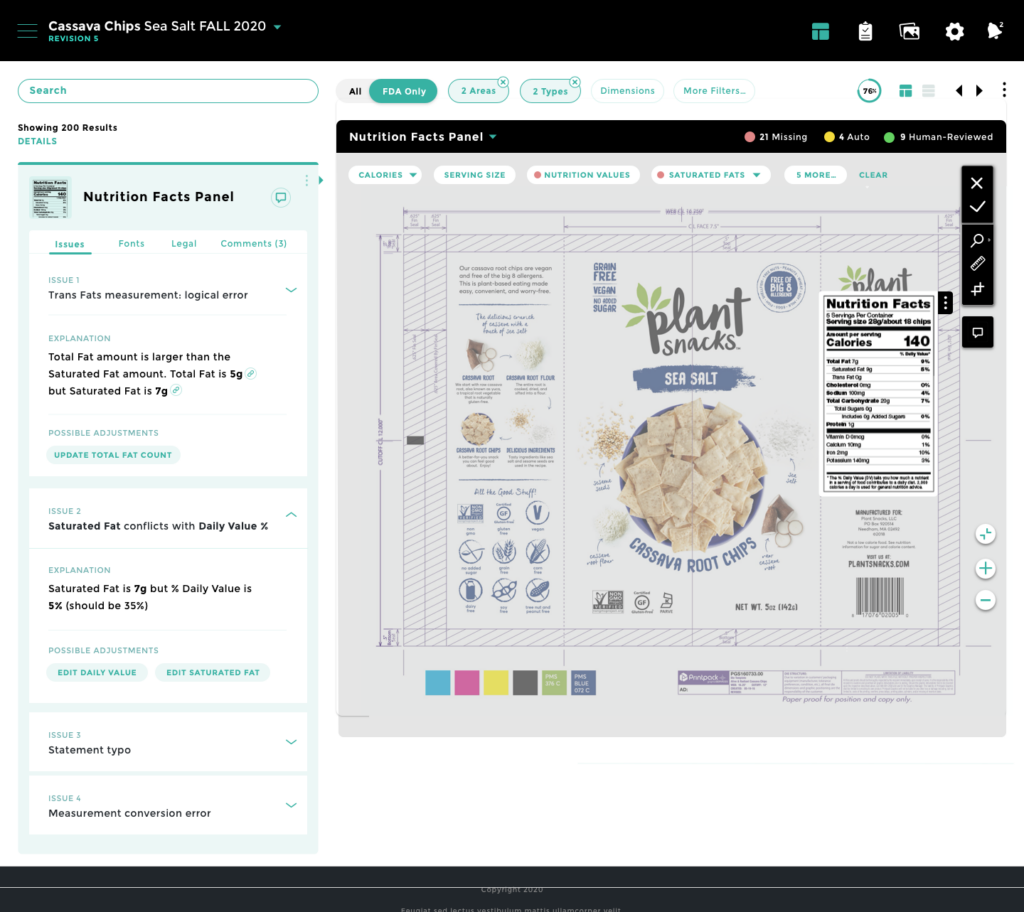
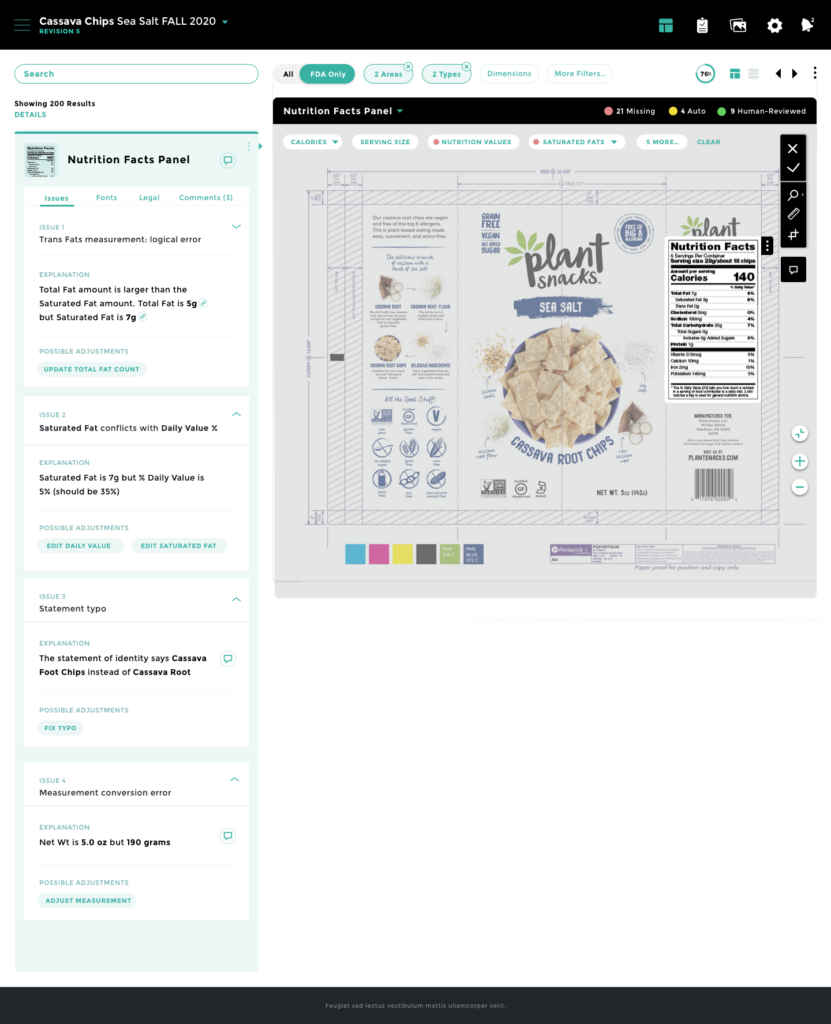
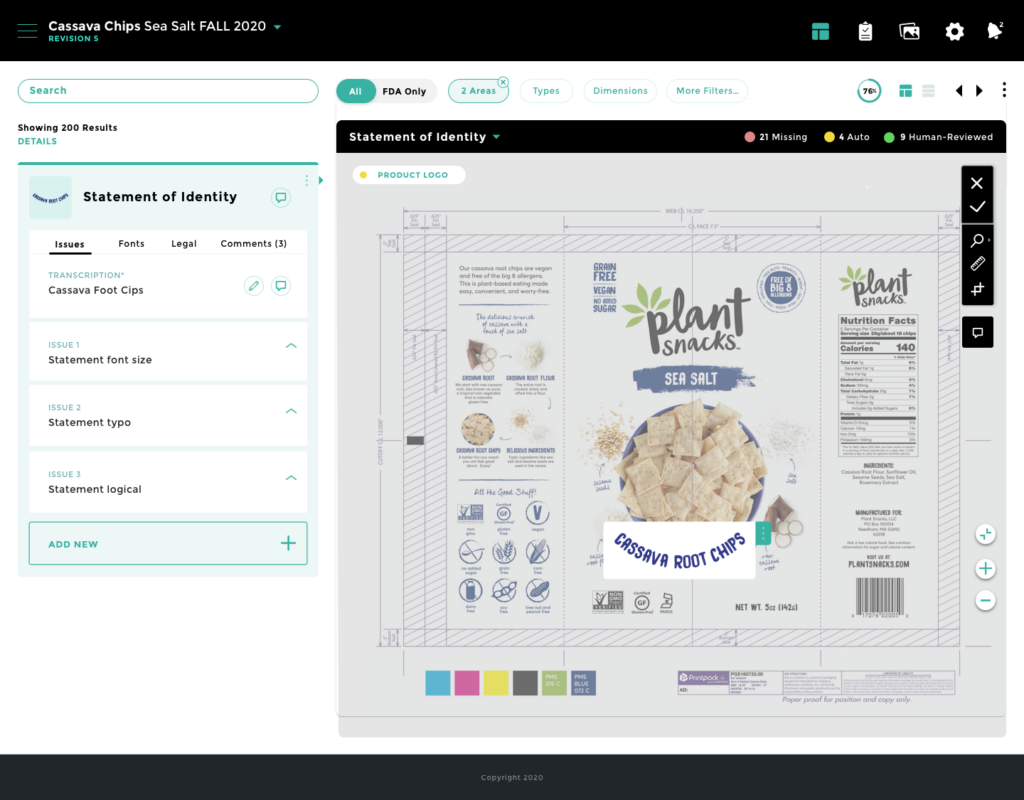
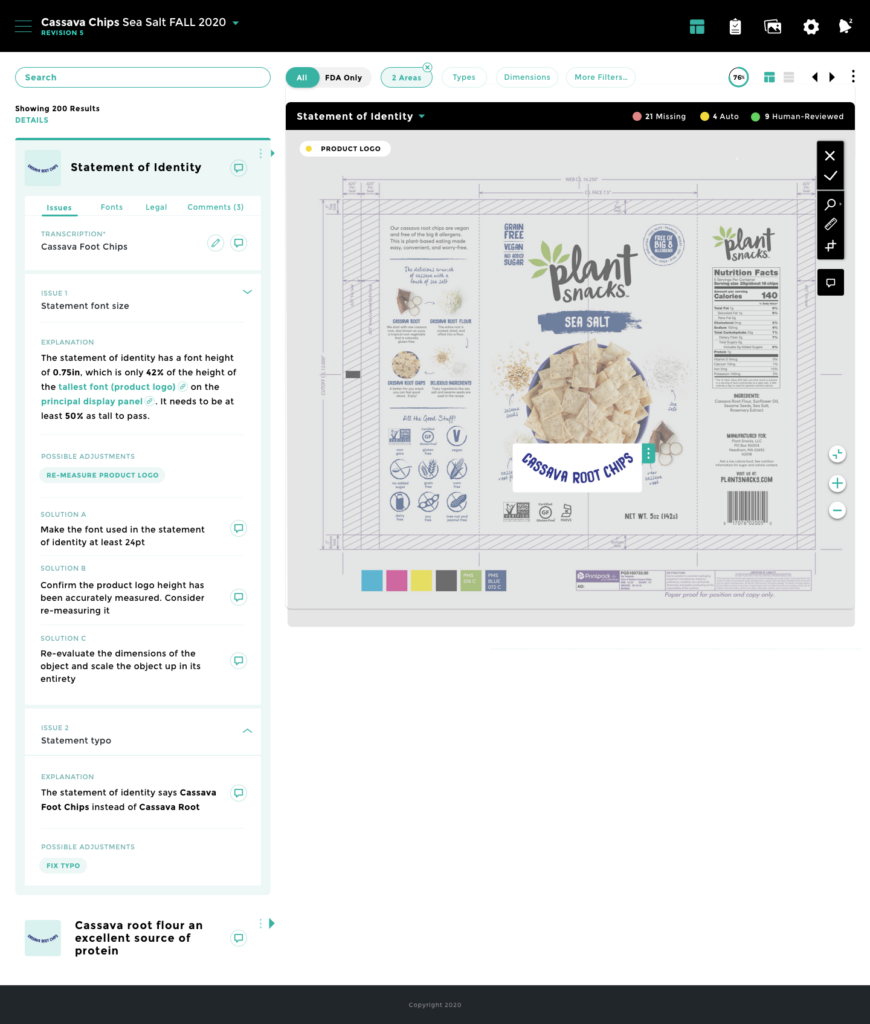
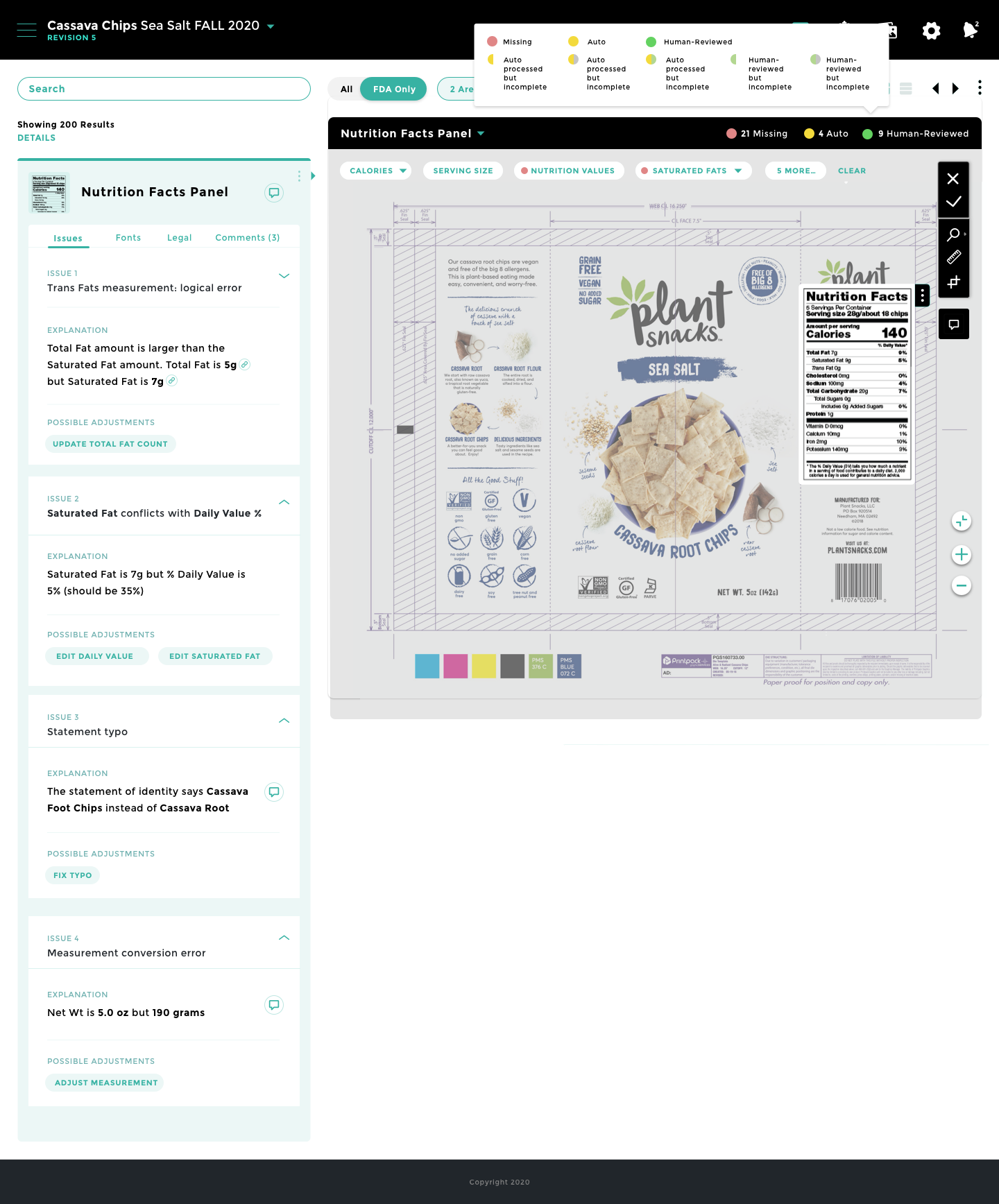
Process
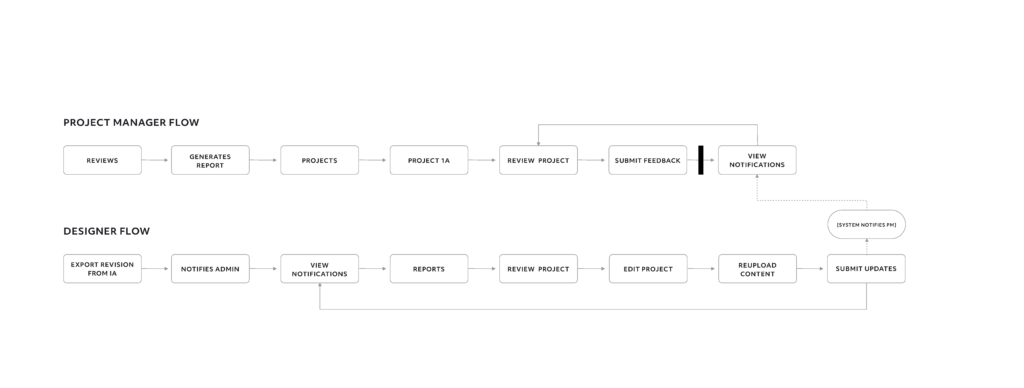
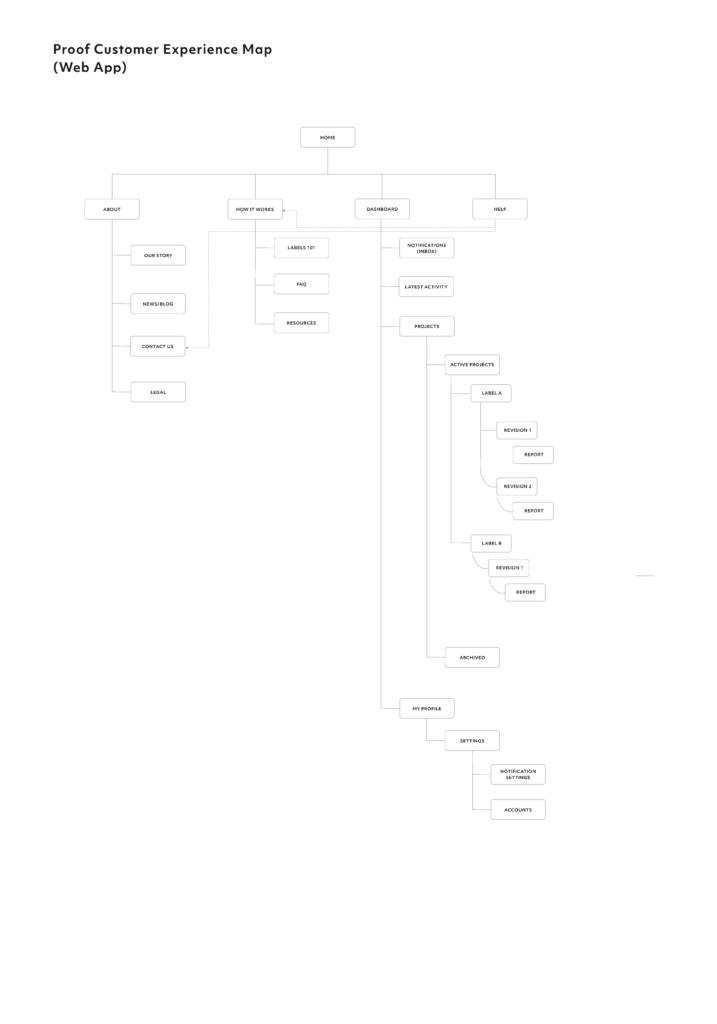
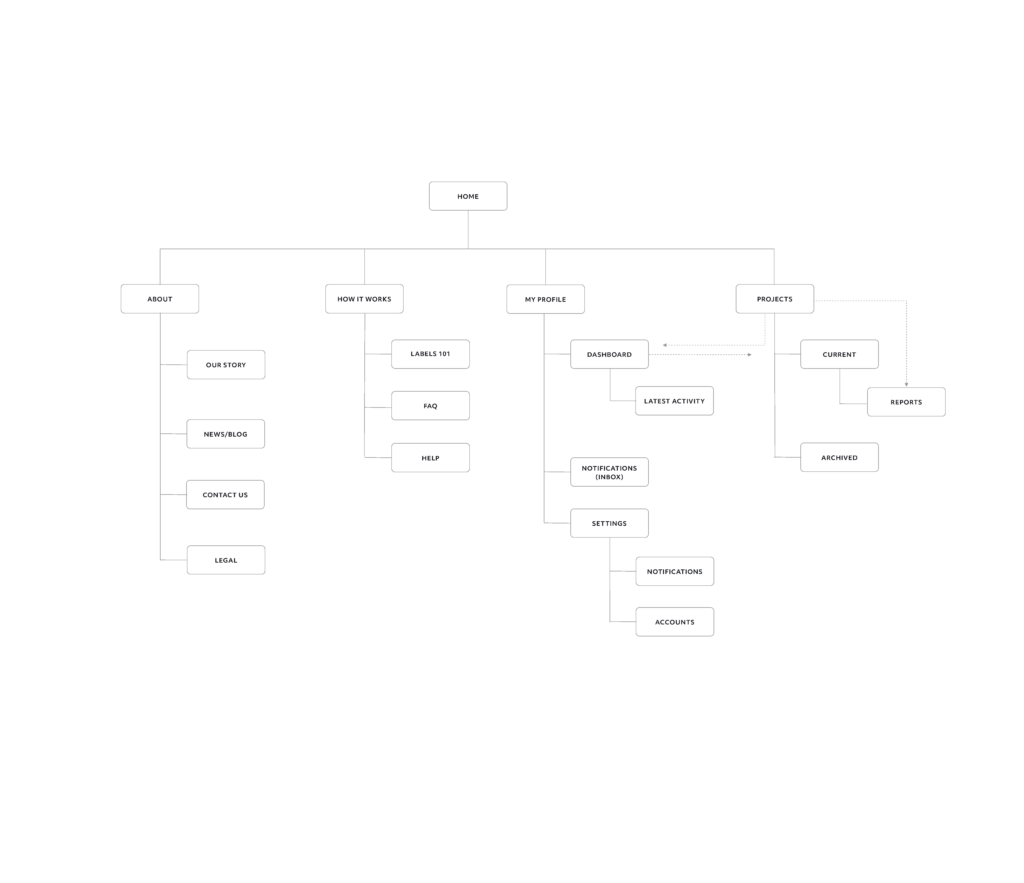

Outcome
Beyond simplifying the legal vetting process for nutritional information, the app aimed to preserve the integrity of packaging designs across numerous creative iterations. Its impact extended beyond mere compliance; it became a catalyst for fostering trust between businesses and consumers, reinforcing the importance of accurate nutrition labels in the American food industry.



